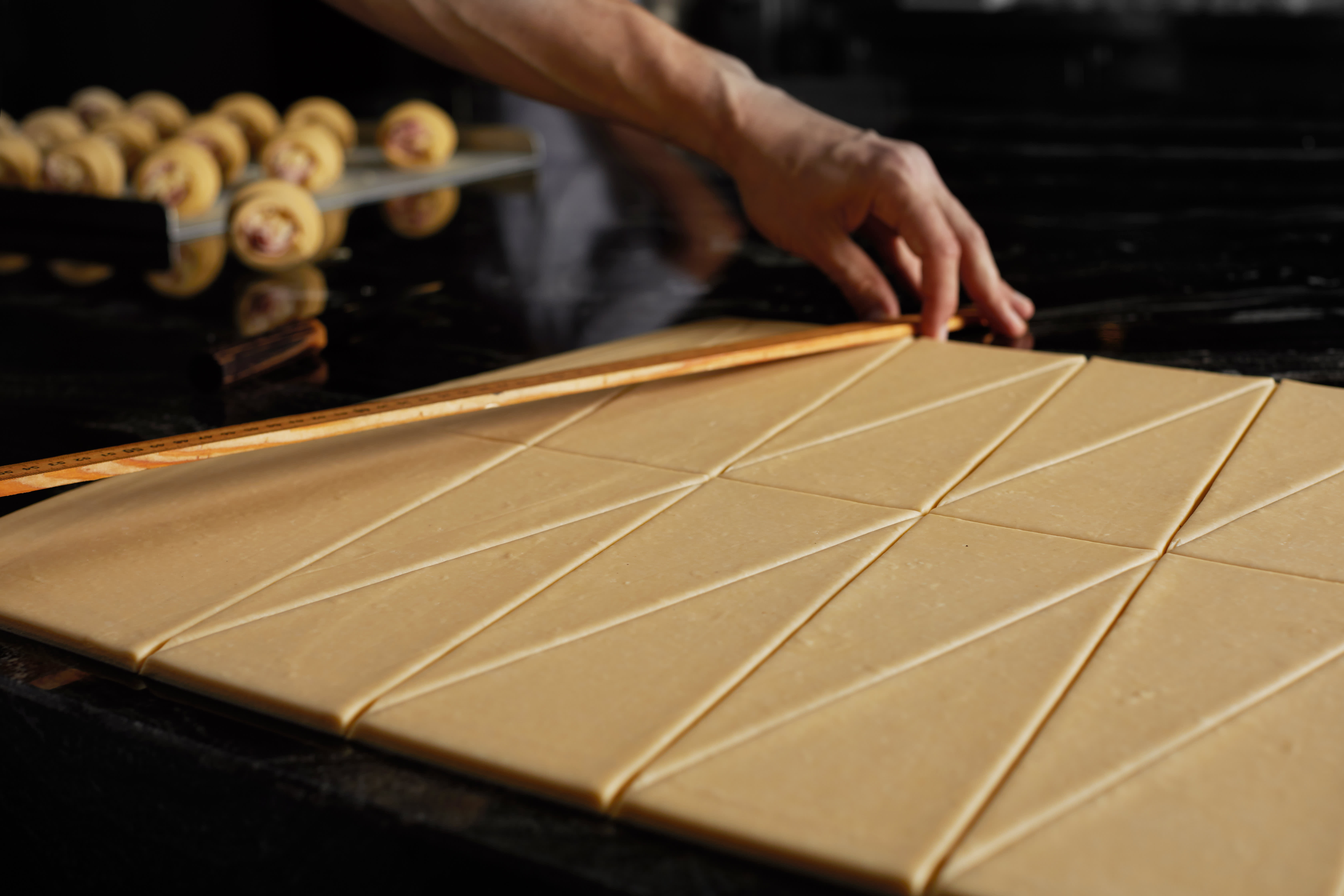The chefs of Melbourne are a proud bunch — and they create dishes that travelers won’t find anywhere else in the world.
They understand food, make the most of the seasonal produce and like to create an experience as much as fine flavors.
From breakfast through closing time, here are five dishes that define the food scene in Australia’s most livable city.
Flaky pastry perfection
Forget Paris.
The best croissant in the world, according to many, including the good folks at The New York Times, may be in Melbourne.
Kate Reid studied the art of making croissants at Du Pain et des Idees, the popular Parisian boulangerie. After much trial and error adjusting recipes to allow for local ingredients, the self-confessed control freak — Kate’s an engineer who used to design race cars — mastered the art before opening Lune Croissanterie.
The coconut rough croissant at Lune Croissanterie.
Jana Langhorst
Now, carb-scoffing visitors to this warehouse space in Fitzroy can watch as her bakers laminate, egg-wash and proof the pastries in a climate-controlled glass cube. A dozen varieties are made each day, but firm favorites include the cruffin — a cross between a croissant and a muffin — and the twice-baked croissant.
The flavors of the latter change regularly, but the coconut rough croissant, with its rich ganache and toasted coconut flakes, is also popular.
Not your average dumpling
Fans of Cantonese cuisine are likely familiar with siu mai, a delicate steamed dumpling commonly filled with pork and prawn.
During the 1940s, siu mai was adapted to suit the palates of the Melbourne populace. The result lives on in a distinct new dumpling, now known as a dim sim (yes “sim,” not “sum”) or simply “a dimmy” as it’s known in Melbourne.
A “dimmy” at South Melbourne Market Dim Sims.
Courtesy of South Melbourne Market.
Those bigger parcels with thicker skin were perfected by Ken Cheng, who set up a stall in the South Melbourne Market many years ago. His round morsels were filled with beef, pork, lamb, cabbage and spices, and they haven’t changed much since Cheng began selling them in 1949.
His sons, Edward and Phillip, now run South Melbourne Market Dim Sims, where they sell their dad’s dumplings as well a popular fried version too.
How best to eat them? With your fingers and dipped in a little soy sauce and chili.
Love the black stuff
In 2018, two weeks before he opened his Southeast Asian restaurant Sunda, chef Khanh Nguyen decided he should put a roti dish on the menu. The buttery Indian flatbread is usually served with a bowlful of traditional curry. But Nguyen had another idea.
“The idea of Vegemite curry came up when I was talking about bread with a colleague,” said Nguyen, referencing the thick salty spread that is beloved by Australians. “The word yeast came to mind, then Vegemite popped into my head.”
Sunda’s buttery roti is served alongside a paste-like ‘curry’ laced with Vegemite.
Ryan Noreiks
Nguyen was excited about it, but no one he told believed it would work.
“My first version of it tasted so weird!” said Nguyen. “I had sleepless nights and changed the recipe a few times, then it eventually turned out to be what it is today.”
Now the delicately spiced, umami-intense dish is one of the most popular items at the restaurant.
“Diners are usually quite skeptical about it at first,” said Nguyen. “Then they end up loving it.”
The dish is now served as a “special” at Sunda, and Nguyen estimates he’s served it over 15,000 times since opening his restaurant.
Slam it down
In Australia, a pie is generally thought of as a snack you eat at a sporting event. They’re hot, filled with minced meat and gravy, and always served with a packet of “tomato sauce,” the Australian term for ketchup.
Chef Raymond Capaldi has taken them to another level at Wonder Pies, which has several locations in Melbourne including the popular Collingwood outlet.
“I realized everyone was doing the same sort of pie, so I thought I could come up with new flavors,” he said.
He observes food trends and incorporates them into flaky pastry perfection. There’s macaroni and Cheezel pie (macaroni, vintage cheddar and mustard topped with Cheezels crumbs, an Australian snack similar to Cheetos) and one filled with duck confit and coffee sauce.
Not to be confused with a hamburger, Wonder Pies’ Tradie Slammer is a beef pie served between two brioche buns, served with house-made chutney.
Courtesy of Wonder Pies
“We push the boundaries without being too Frankenstein for the market,” said Capaldi.
The Tradie Slammer is another surprise hit at Wonder Pies. Available during Australia’s winter months (June to August), it’s a pie in a brioche bun served with house-made chutney — a creative tip of the hat to Capaldi’s Scottish background.
“When we had no money in Scotland, we used to put a pie in a roll — and it would last us half the day,” he said.
Freshwater wonders
One of the most sought-after tables in Melbourne, if not all of Australia, Chef Ben Shewry’s Attica is touted as Australia’s finest dining experience.
The restaurant is known for its innovative tasting menu, which is stacked with native ingredients like kangaroo, crocodile, saltbrush and murnong (an Australian yam).
Attica’s grilled marron, a crayfish found in Western Australia, with desert lime.
Colin Page
A highlight is the marron — a freshwater crayfish that rarely leaves the menu. The slightly sweet crustacean is extremely versatile and works with the restaurant’s seasonal menu changes.
“It’s currently paired with sunrise lime, as both ingredients come from Western Australia,” said Shewry. “The zing of this citrus really makes the marron sing.”



